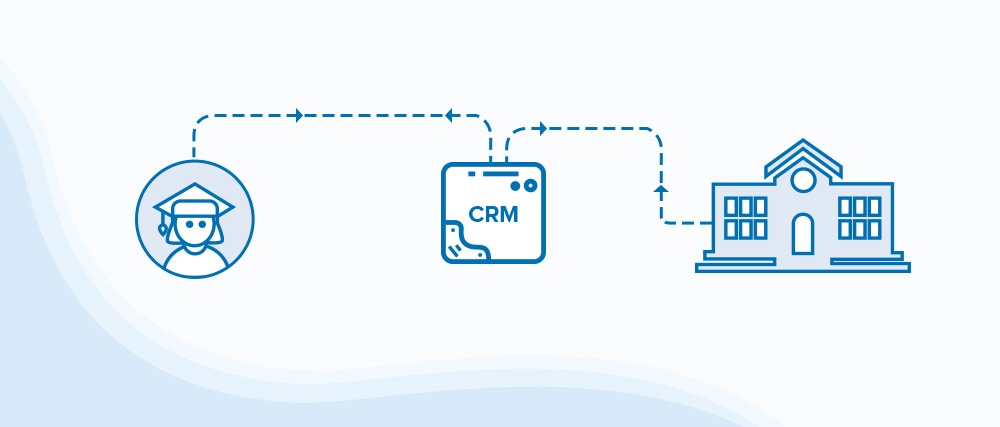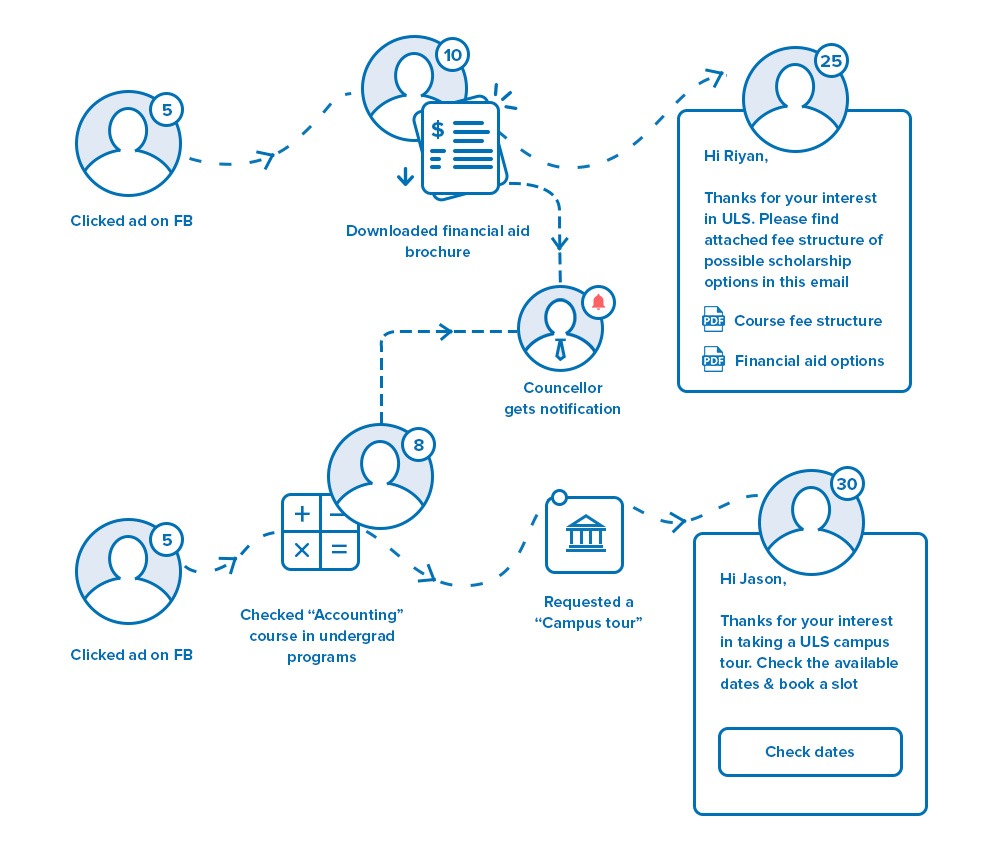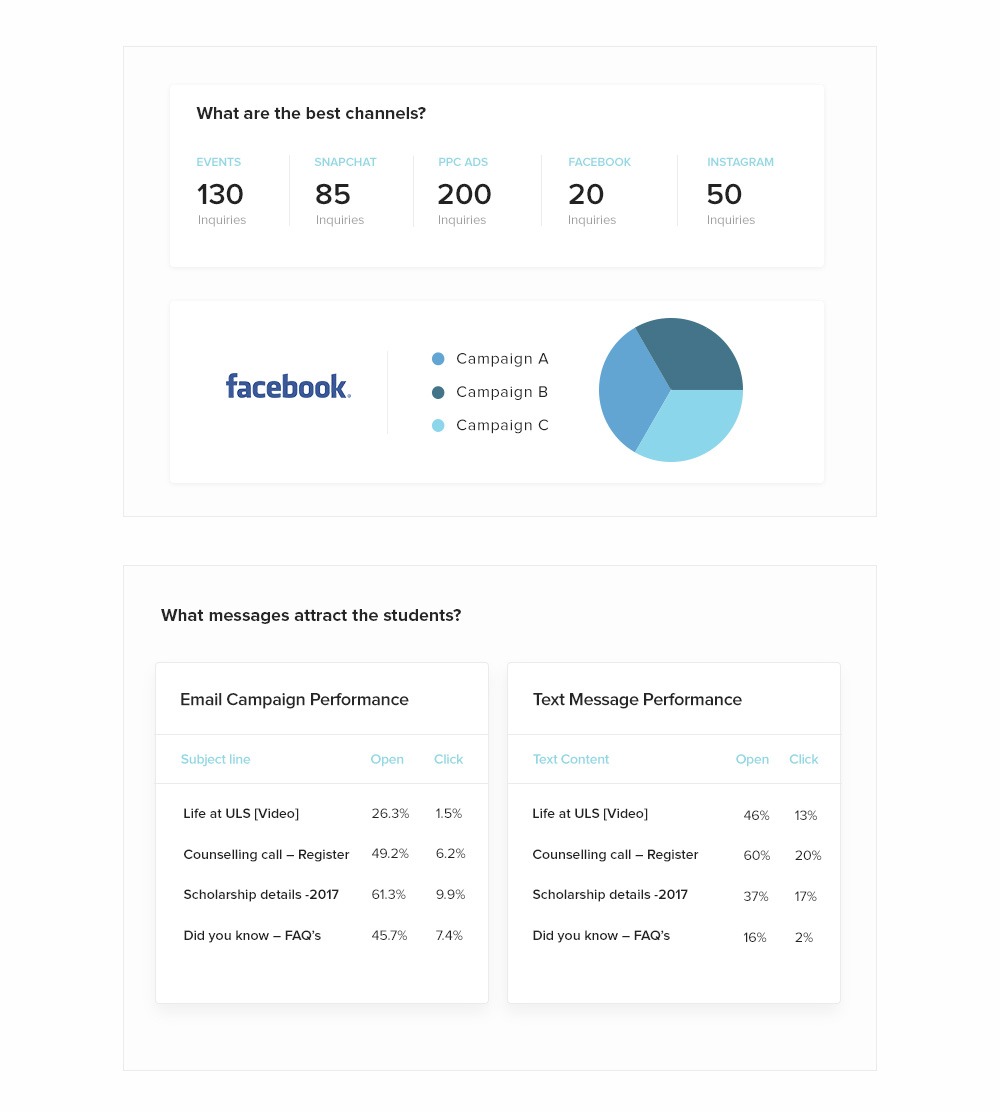In today’s digital age, prospective students expect rapid responses to their inquiries. Fast Company reports that, within the context of company-customer (or school-student) relations, fifty percent of e-mail responses are sent within two hours. Social media is nearly twice as demanding, with 42% expecting a response within 60 minutes. That’s Generation Z
Top 10 ways to effectively communicate with Gen Z (View Infographic)
This expectation is only magnified by the proliferation of media and technology. Generation Z is connected to some type of device up to 10 hours a day. And, by some estimates, is exposed to around 4,000 advertisements daily. Prospective students’ attention is increasingly spread thin, meaning schools not only need quick response times—they must find engaging ways to communicate, too.
So, what can higher education institutions do to ensure they’re responding at the speed which Generation Z prospects need and expect? How, too, can institutions ensure that they’re communicating in creative and compelling ways?

Acquiring well-designed marketing automation and customer relationship management (CRM) software is a great start. The technology allows admissions and marketing staff to respond to questions and potential interest immediately with specialized notification features. And they can personalize messages based on their audience—one of CRM’s most important communication tools.
For example, if a prospective student takes a sales-relevant action—like filling out a form or visiting a program’s webpage—staff are alerted right away. They can then respond immediately, which helps put them ahead of their competition. Staff are also encouraged to text with applicants, Generation Z’s preferred method of communication.

The software’s mobile nature is also a key strategic feature. Staff can manage communication through CRM software’s app on their cell phones, allowing them to respond to messages on-the-go. This is also helpful managing multiple inquiries, helping staff stay organized outside of their e-mail inbox.
Perhaps one of CRM’s most valuable offerings, however, is its ability to collect, organize and analyze data. The software offers critical insight into what students are interested, and what draws them in. This addresses one of marketing’s greatest challenges: attribution, the analysis that tells you if what you’re doing is working.

 “Until you’re able to meaningfully attribute your user experience success to a particular effort, you’ll never be able to target the proper audience at the proper time,” says Katya Popova, a strategic communications director at American University in Washington, DC.
“Until you’re able to meaningfully attribute your user experience success to a particular effort, you’ll never be able to target the proper audience at the proper time,” says Katya Popova, a strategic communications director at American University in Washington, DC.
Which is why, in order to communicate strategically, understanding one’s audience is so important. Accurate and carefully-analyzed data informs staff who a student really is, allowing them to personalize communication in creative ways.
“Marketing automation allows you to speak to possible constituents in a way that resonates with them,” Popova says.
This includes messaging in drip e-mail campaigns, which can be segmented based on criteria like students’ interests, age and GPA; landing page text and form auto-responders; staff-to-student direct communication; and more.

Fast response time and data-backed, personalized messaging—both achievable through marketing automation and CRM software—are two essential elements of strategic communication in higher education. Schools who can address leads’ inquiries and engage them in personal ways are aligned with Generation Z’s needs—and one step way ahead of their competition.








